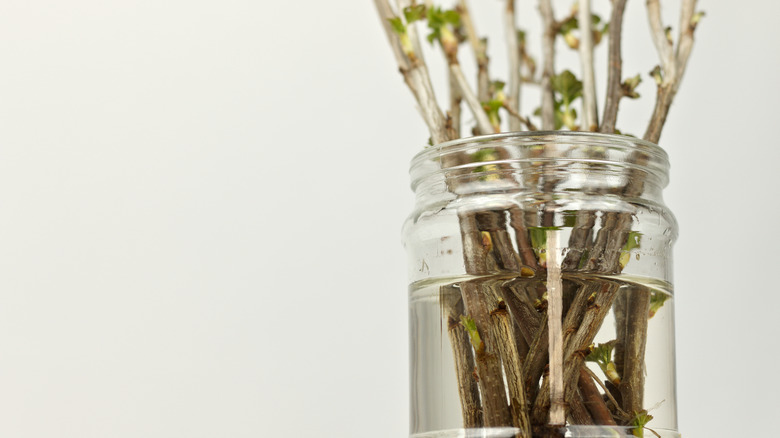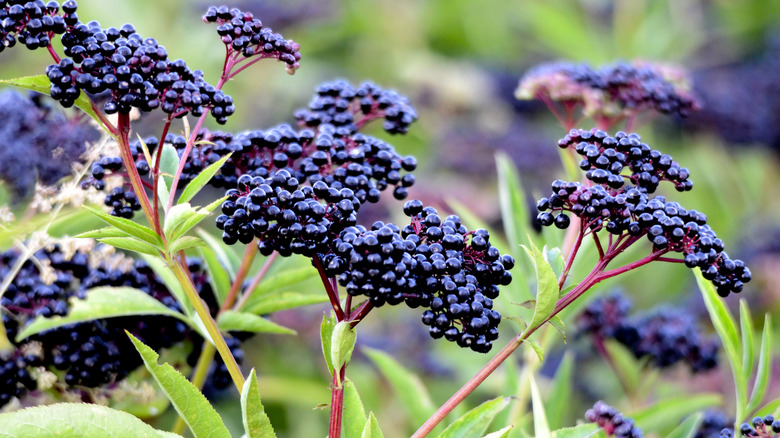The Delicious Fruit Tree You Can Grow From Cuttings For Endless Produce
When you find something you love, it's human nature to want more of it. For those who love fruit trees and want more of them, propagation is complex because most fruits require grafting. There is one wild plant with delicious berries that may not be top of mind for your backyard orchard, but it's one of the fruits that return every year after planing and is much easier to propagate. This plant is elderberry, and you can propagate it from hardwood, softwood, and root cuttings without grafting.
Two species of elderberry are common in the United States: The shrublike Sambucus canadensis, known as American elderberry; and Sambucus nigra, known as black or European elderberry, which is more like a small tree. Elderberry, hardy in USDA Hardiness Zones 4 to 10, has been used medicinally since ancient times and has a lot to offer as a plant worth propagating. It grows quickly and is one of the berried plants that attract birds. The tart, earthy flavor of the berries lends itself to syrups, jams, jellies, baked goods, juice, wine, tea, vinegar, and more.
Elderberry is easy to propagate with cuttings
To propagate from hardwood cuttings, cut elderberry while the plant is still dormant in late winter before budbreak, typically in early February. Select growth from the previous growing season, cutting two to four nodes for a cutting about 7 inches in length and the diameter of a pencil. You likely won't succeed with 100% of your cuttings, so cut more than you think you'll need. You can place the cuttings right away in potting soil with one node below the soil and with the top bud exposed. You can also refrigerate them and keep moist for up to six weeks until you're ready to plant. Once placed in soil, they should be well-rooted in six weeks. Continue to keep cuttings moist while they are rooting, using a misting system if possible.
The process for softwood cuttings is the same, except herbaceous cuttings are taken during the growing season, and moisture is a special concern because softwood cuttings dry out more easily. Root cuttings, like hardwood cuttings, should also be taken during dormancy, so dig them before the plant is growing. They should be 4 to 6 inches long and, like hardwood cuttings, about the size of a pencil in diameter. Root cuttings should be horizontal when placed in a pot and covered with an inch of potting soil or soilless medium.
Note that elderberries are mildly toxic and can cause nausea and stomach upset. Berries are much more toxic before they are ripe, but cooking renders the toxicity inactive. There are many things to consider before planting a fruit tree in your backyard, such as how big the trees get. American Elderberry will top out at 8 to 10 feet high, and European black elderberry can grow to 20 feet tall.

